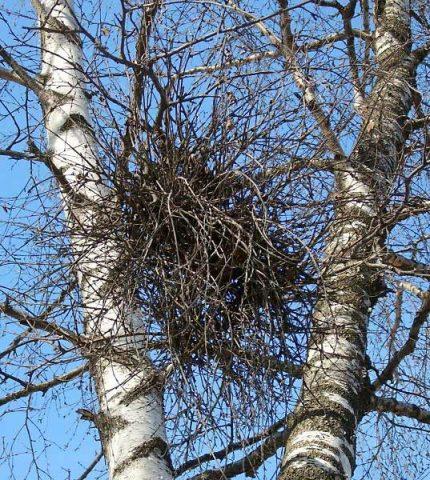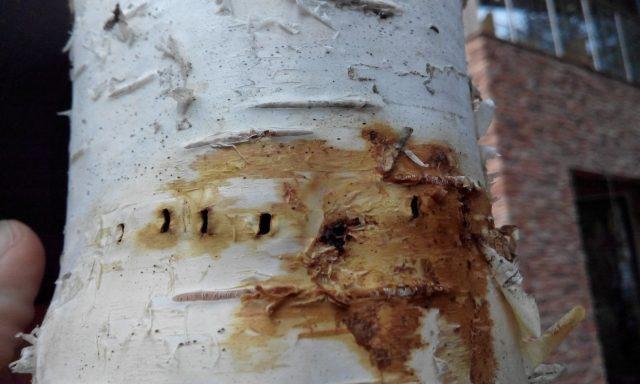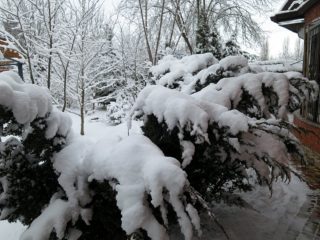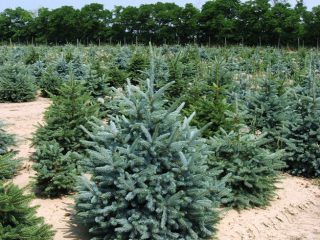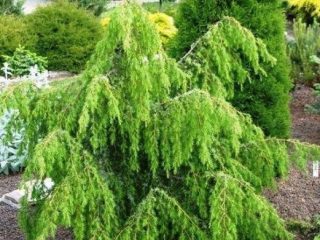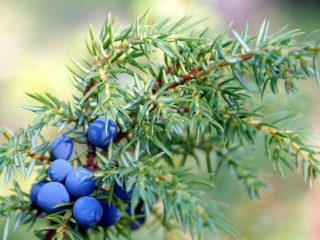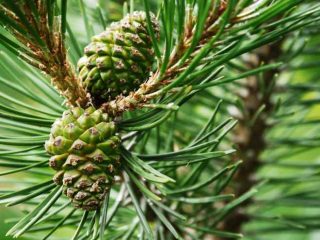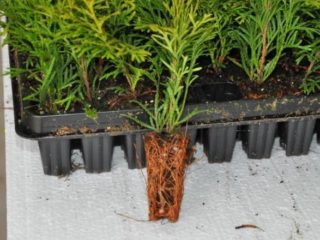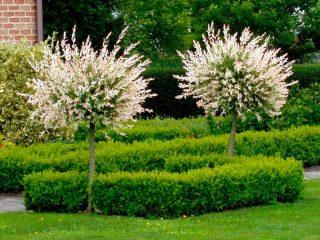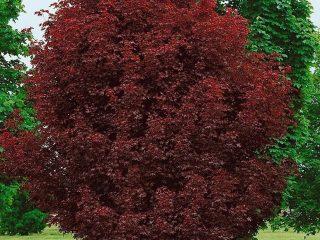Content
Downy birch, previously called white birch, is a tree that can well be called one of the national symbols of Russia. Here it is not only found everywhere in natural conditions, but is also actively used in landscape design. However, despite popular belief, simply planting a tree is not enough - it also needs care to maintain its decorative appearance and maintain overall endurance.
Botanical description of downy birch
Downy or pubescent birch (Betula Pubescens) is a species of deciduous trees that make up a large genus of the same name. It is capable of both forming quite large birch forests and “mixing” with other forest-forming tree species, deciduous or coniferous.
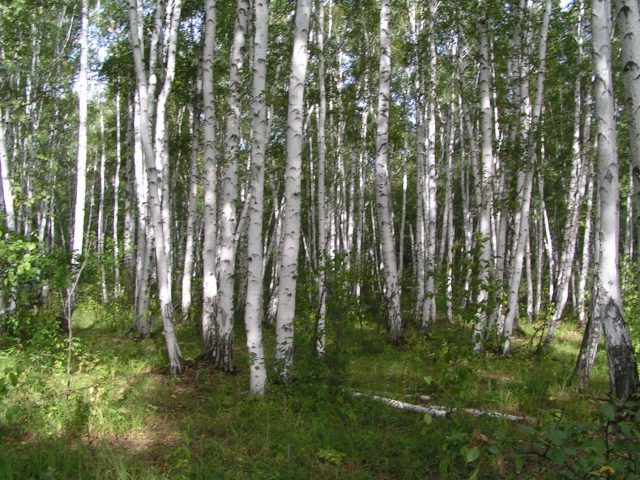
The tree successfully adapts to fairly moist soil, so it often grows on the outskirts of swamps and lake shores
Until recently, downy birch was known as white birch (Latin name - Betula Alba), but this name was unofficially used in relation to another representative of the family - silver birch, so downy birch had to “change its name” to avoid confusion in the classification.
The height of an adult tree reaches 25-30 m, the girth of the trunk is 80 cm. The bark acquires its characteristic snow-white color only at 8-10 years of age; before that it has a brownish-beige tint, which is why young specimens are often confused with alder. The unusual shade ensures the synthesis of a specific phytohormone - betulin.
Mature trees have smooth, very thin bark, as if made of paper. Shallow black-gray cracks form only at the base of the trunk. They are often accompanied by the formation of bast, when the bark “stratifies” into separate thin circular transverse layers.
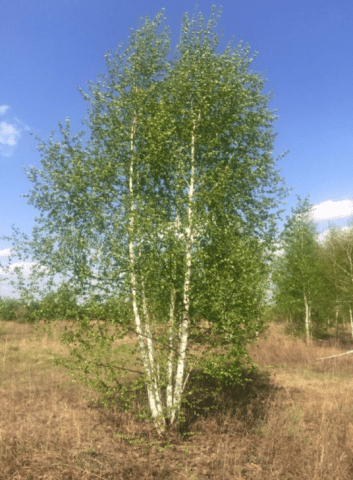
Multi-stemmed specimens are quite rare, but they also occur
As it grows, the crown changes configuration from a narrow pyramidal to a spreading tent-shaped one. At the same time, the shoots will not fade, and it will not turn into a “weeping” one. Annual growth of branches is easy to distinguish by the thick soft “edge”.
The shape of the leaves varies from almost diamond-shaped to ovoid. They are small (3.5-7 cm in length), with a pointed tip and a serrated edge.
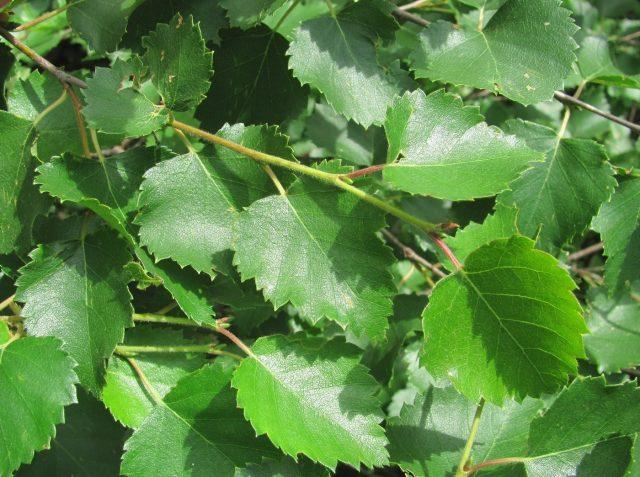
In young leaves, both sides are covered with thick “lint”, then it noticeably “thins out”, remaining only on the underside and at the petiole
The root system of downy birch is approximately 2-3 times the diameter of the crown. However, it does not go deep into the soil, so there is always a risk that the tree will be knocked down by a strong wind.
Characteristics of downy birch
Downy birch is a tree widely in demand in folk and official medicine and in industry. It is no less popular among professional landscape designers.
Flowering of the downy birch
Flowering occurs from mid-April to early May. The fruits ripen at the junction of summer and autumn. They appear only on mature trees (from 15 years old).
The tree is monoecious. The fruits are set due to cross-pollination of heterosexual “earrings”. “Male” (brownish-brown) form in the fall and overwinter on the branches. “Female” (bright green) appear quite early in the spring, when the leaves have not yet blossomed. The fruits are small winged (about 2 mm long) “nuts”.
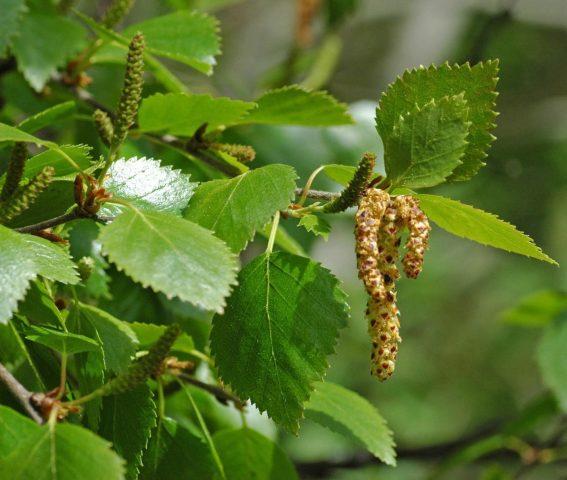
Pollen is carried mainly by the wind, and over fairly long distances.
Life expectancy of downy birch
Botanists call downy birch a relatively “short-lived” tree. It is extremely rare for her to “cross the line” of 120 years. In favorable conditions, the lifespan of a tree can reach 300 years, but these are isolated cases.
Where does it grow
Downy birch is extremely widespread in the Northern Hemisphere, with the exception of the Iberian Peninsula and the south of the Apennines. It is found everywhere in the European part of Russia, in the North Caucasus, in Eastern and Western Siberia, and in the Urals. In the north, its habitat is limited to the tundra, in the south – to the tropical climate.
Differences between downy birch and silver birch
It is quite difficult for a non-specialist in the field of botany to distinguish “relatives”. However, in the opinion of professionals, when comparing downy and silver birch, the difference is obvious:
- In silver birch there is no “edge” even on young shoots; instead of “lint” they are covered with small growths resembling warts.
- If you rub two downy birch leaves against each other with their front sides, nothing will change in appearance. And when the same is done with the leaves of silver birch, a whitish coating of “torn off” cuticle remains.
- The bark of the downy birch is almost completely snow-white, while that of the silver birch is rather off-white, with multiple deep black-gray “furrows” and growths.
- The shape of the leaf base of the downy birch is smooth, rounded-heart-shaped, while that of the silver birch is more sharply defined, close to diamond-shaped.
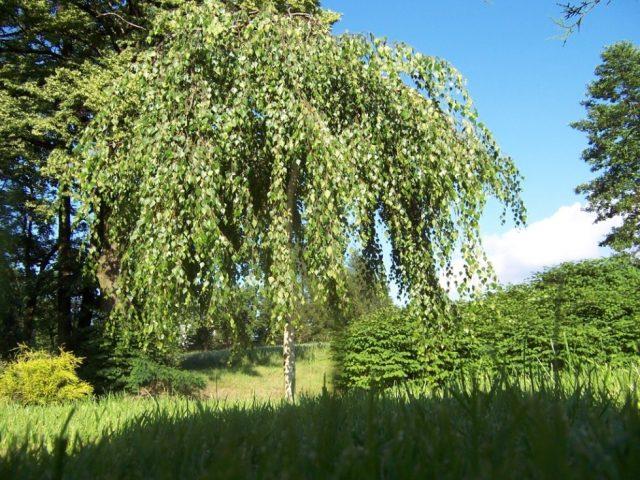
Downy birch, unlike silver birch, tolerates drought much worse and adapts better to waterlogged soil
Planting and care
Downy birch is most often planted at the end of summer or early autumn, leaving at least 4 m between the trees and any “obstacle”. The chosen place must be well lit and warmed by the sun. Protection from strong winds is also required.
The culture is not picky about the quality of the substrate. It successfully takes root both on “heavy” clayey and “poor” sandy soils. Acidity is also not an obstacle. Only saline and alkaline soil will not suit downy birch.
It is advisable to add natural organic matter and complex mineral fertilizer to the planting hole. In such soil, the root system will begin to grow faster, ensuring the normal development of the plant.In general, it takes about a year for a tree to adapt to a new habitat, during which time it stretches 80-100 cm.
Even gardeners with little or no experience can take care of the plant:
- Watering. Only necessary during the first season after planting. Downy birch is watered once every 7-10 days, taking into account weather conditions. The approximate water consumption rate is 15-20 liters. Then the tree successfully manages with melt water and natural precipitation.
- Feeding. It is recommended to apply them in the first 2-3 years after planting, then as desired. At the beginning of the season, the plant is watered with a solution of mineral nitrogen fertilizer; around mid-autumn, a complex product for decorative leafy garden crops is applied.
- Mulching. An extremely useful procedure that allows you to avoid weeding and loosening, and prevents excessively rapid evaporation of water from the soil. A layer of mulch 3-5 cm thick will have to be changed every 2-3 years.
- Trimming. Only sanitary pruning is required. If there is a desire to form a crown of an unusual configuration, work is carried out in the fall. In the spring, the downy birch begins to experience intensive sap flow early.
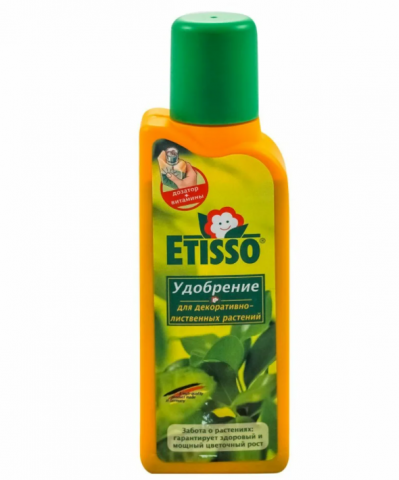
The main requirement for “autumn” fertilizers is a minimum of nitrogen or its absence
Reproduction
Downy birch mainly reproduces in ways provided by nature itself. New specimens often appear by self-sowing; seeds can also be planted purposefully.
Sowing is carried out in the fall: either directly into open ground, or into an unheated greenhouse or greenhouse.In the second case, the emerging shoots are transferred to a permanent place in August-September of the next year. There is no need to deeply bury the seeds: it is better to simply scatter them over the surface of the soil and “insulate” them with a layer of mulch.
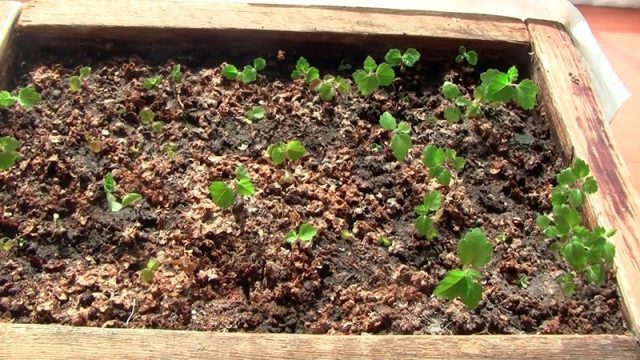
When sowing seeds, good lighting of the selected area is required.
You can sow seeds in spring. But in this case they will need stratification simulating wintering in natural conditions. Planting material is kept in the cold (1-4 °C) for 1.5-2 months.
The tree is also capable of “self-reproduction”. If you cut it down, leaving several viable shoots on the stump, some of them will eventually turn into well-developed branches. They need to be cut and placed in water, waiting for the roots to form.
Diseases and pests
The experience of gardeners shows that most often downy birch, when grown in captivity, is affected by powdery mildew. The leaves are covered with a grayish-white powdery coating. Gradually it becomes darker and denser. The fabrics underneath, depending on how hot and rainy the weather is outside, dry out or rot.
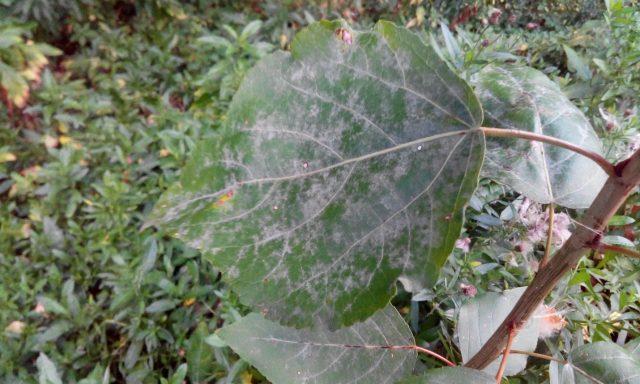
In this case, the disease is not contagious, other plants on the site do not suffer from it
They fight powdery mildew on downy birch using fungicides. The concentration of the solution, frequency and number of treatments, and other important nuances of the procedure are determined according to the instructions in the manufacturer's instructions.
Other possible diseases of downy birch:
- "Witch's Broom" Instead of ordinary shoots, many small branches appear on the tree. The leaves on them are also small, covered with a whitish coating.
“Witch’s broom” will not kill a downy birch, but the decorative appearance of the tree will be greatly affected
- Bacterial dropsy.Multiple “swells” are formed on the bark, filled with liquid with a specific pungent odor. Gradually they burst, the tissues underneath them die, and the tree dries out.
Like other bacterial diseases, dropsy on downy birch cannot be cured with modern means.
Of the pests that are interested in downy birch, they are mainly the almost “omnivorous” caterpillars of white moths, cutworms, and hawthorns that feed on leaf tissue. They are extremely voracious, leaving large irregularly shaped holes on them or even just one “skeleton” of veins.
In order to prevent adult individuals from laying eggs on downy birch, they are “scared off” by spraying the tree with Lepidocide or Bitoxibacillin during the period of their maximum activity. Almost any universal broad-spectrum insecticide will help get rid of caterpillars.
Application in landscape design
In landscape design, pubescent birch is most often planted “solo” or in small groups. She is quite “self-sufficient”. In addition, designing a garden in the Russian style does not imply the presence of complex and catchy fantasy compositions, where “companions” will only distract attention from the tree, which looks simple and strict, but at the same time very graceful and elegant.
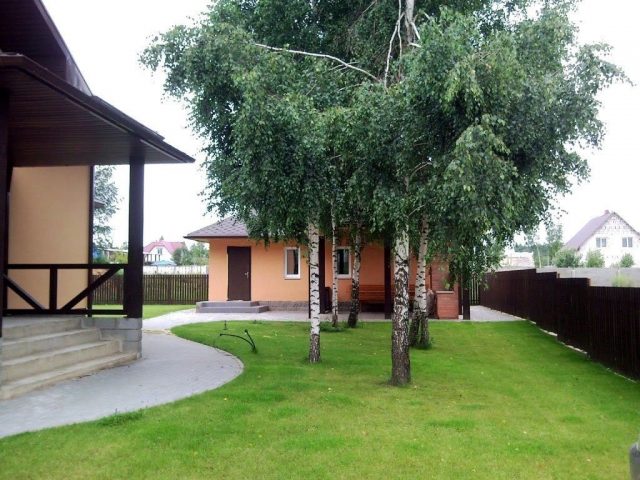
Downy birch is actively used for landscaping both “public” areas and personal garden plots.
Conclusion
Fluffy birch fits very harmoniously into the landscape design of gardens and personal plots in the Russian style.The tree is extremely unpretentious, hardy and cold-resistant - it can be called practically trouble-free to grow. However, in order for it to look as presentable as possible and develop normally, it needs to choose the right place for planting and provide, albeit minimal, care.
